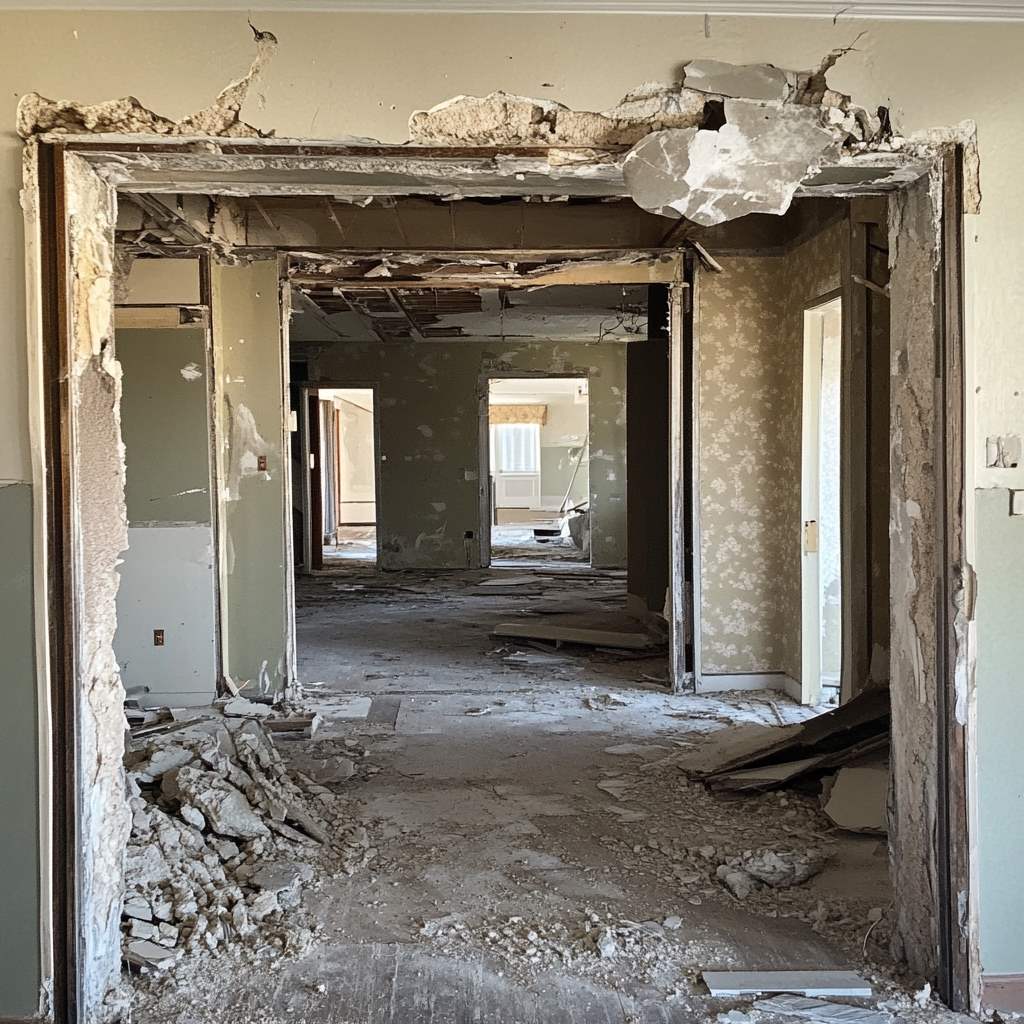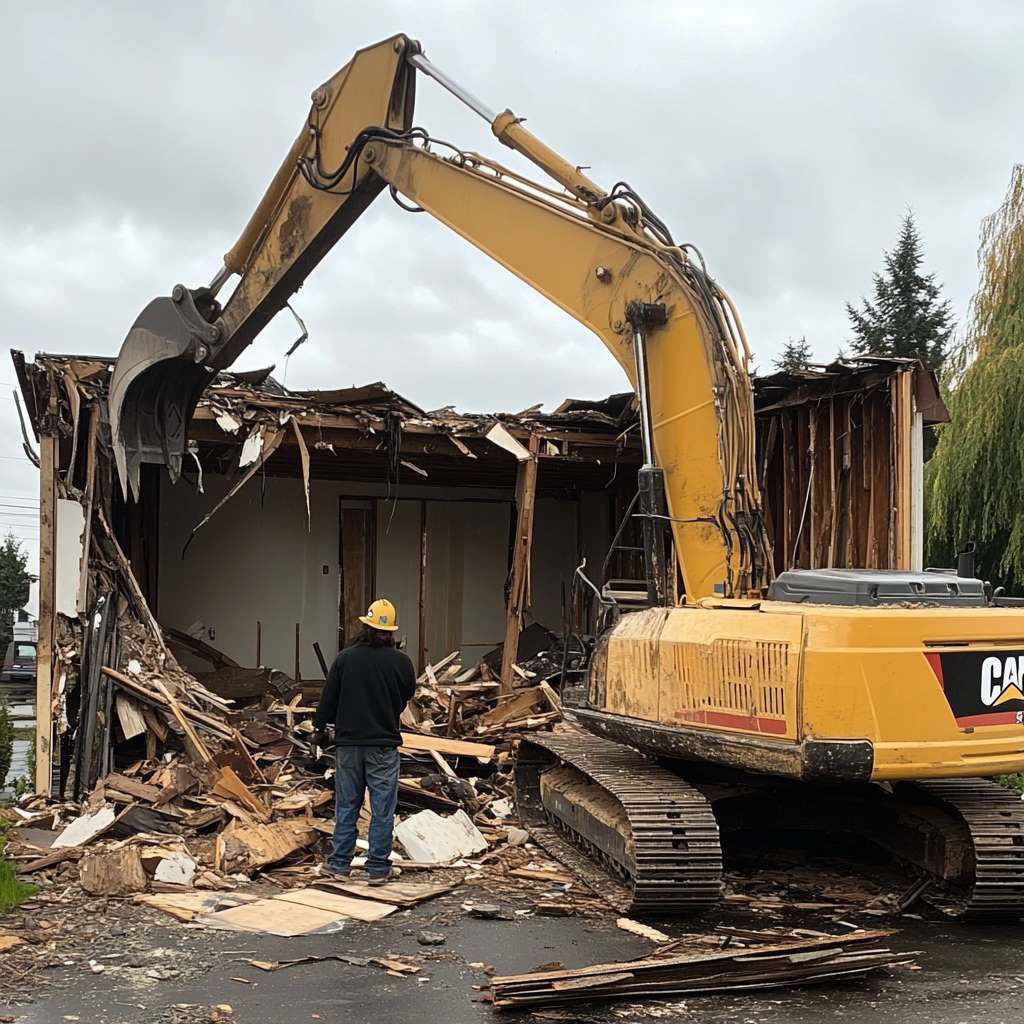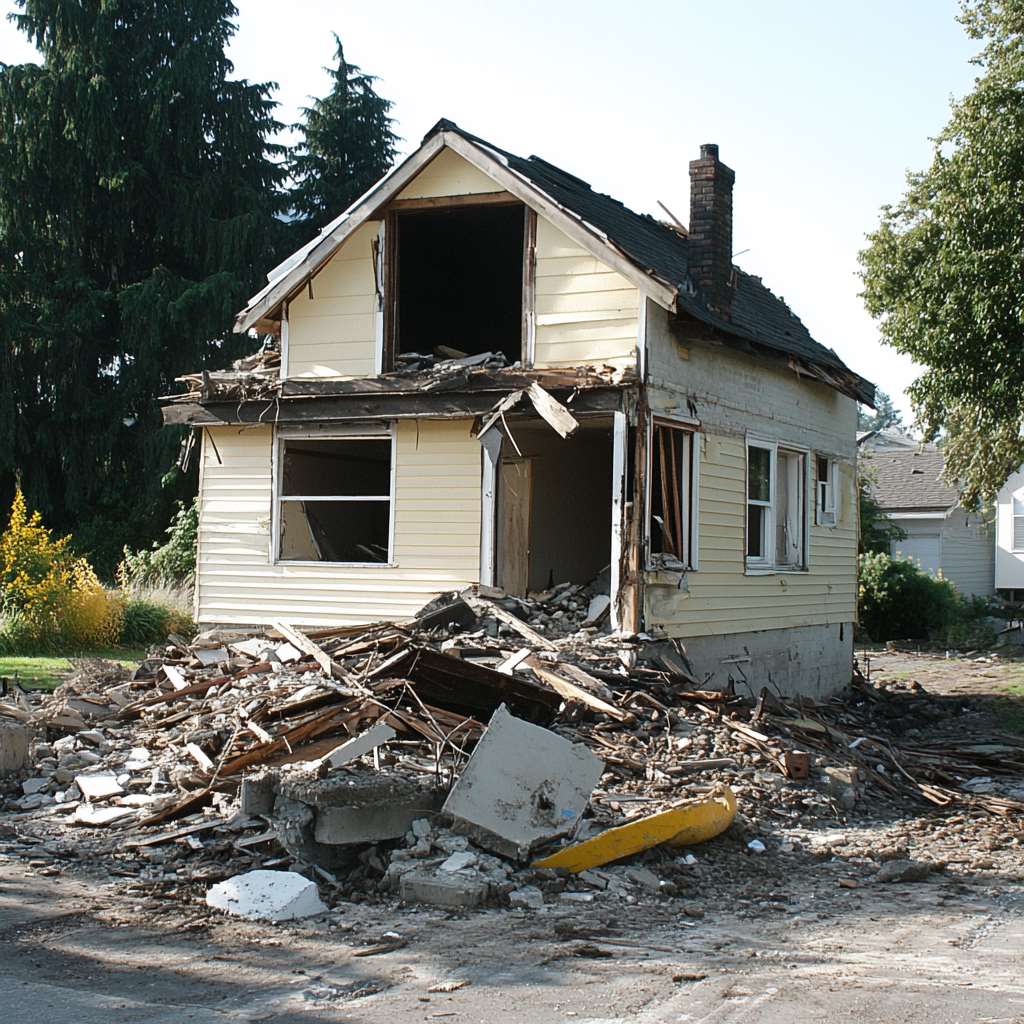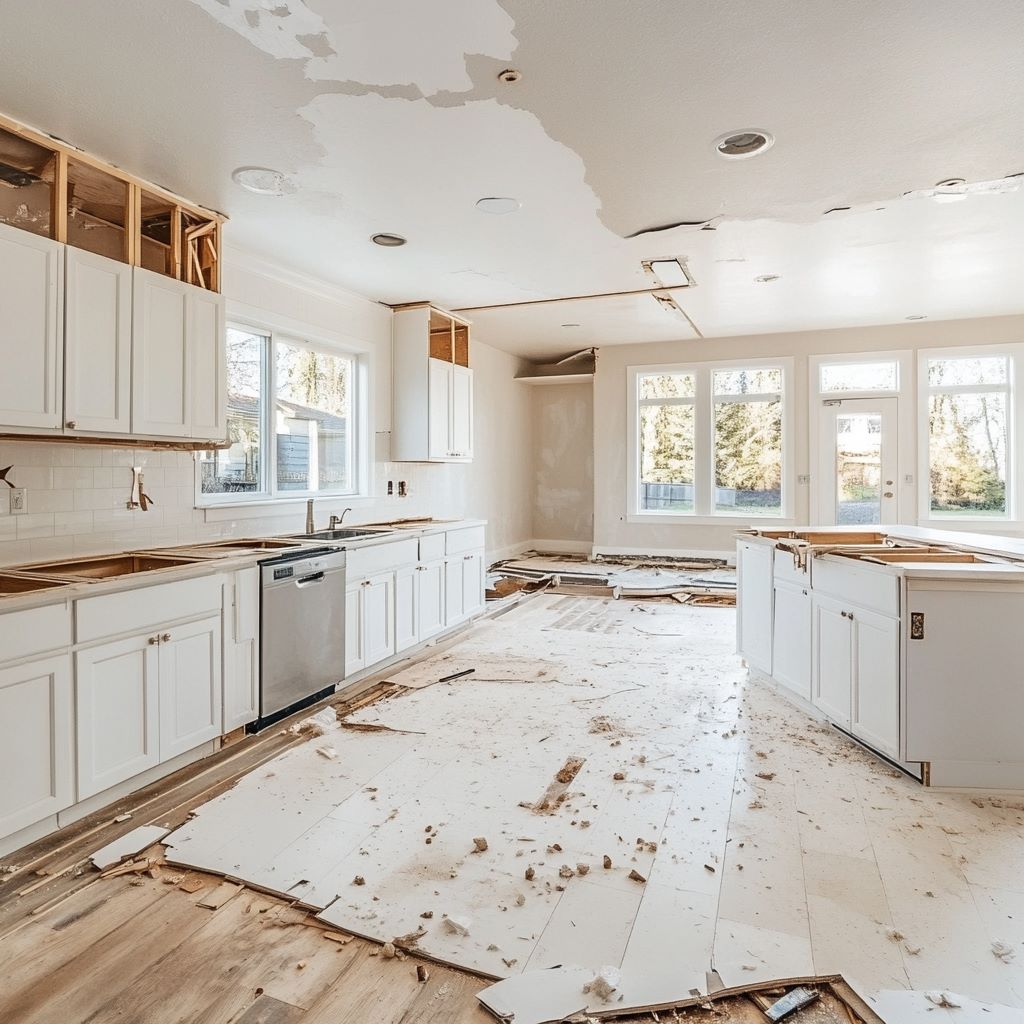Proper planning is important to make sure the demolition is safe, efficient, and compliant with local regulations. Homes in Snohomish County, Skagit County, and King County all require careful consideration of specific local guidelines, safety, and environmental practices.
That’s where PNW Demolition comes in, as local trusted demolition experts we make this daunting task and handle it with ease. We navigate the channels needed and work in tight spaces to make sure your plan goes off without a hitch.
Key Takeaways
- Proper planning guarantees safety and efficiency
- Managing waste and recycling minimizes environmental impact
- Expert advice can simplify and optimize the demolition process
Reasons for House Demolition
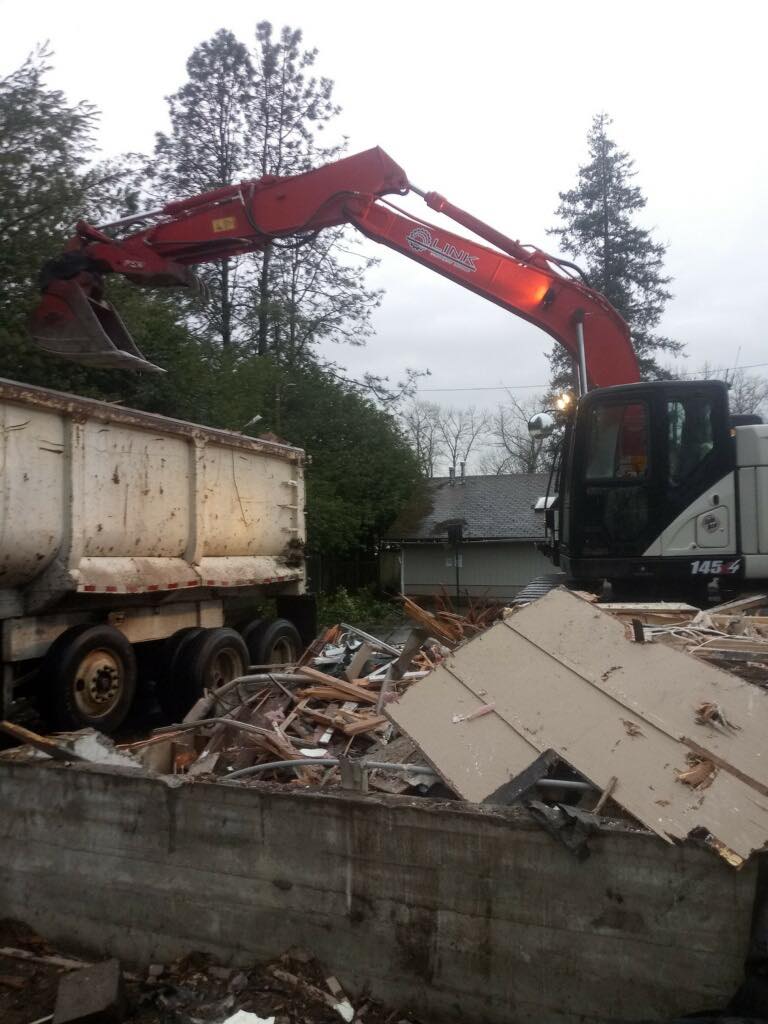
There are several reasons why you might consider demolishing a house. PNW Demolition highlights key factors that often drive the decision to tear down a structure. Structural Issues
If the house has significant structural problems, such as foundation damage or severe mold, it may be more cost-effective to demolish and rebuild rather than attempt extensive repairs.
Property Redevelopment
You may want to use the land for a new construction project. This can include building a new family home, developing a commercial property, or creating community spaces.
Compliance with Regulations
In some cases, the house might not meet current building codes or zoning regulations. Demolishing the house can be a necessary step to comply with local laws and guarantees safety standards.
Hazardous Materials
Older homes often contain hazardous materials like asbestos or lead paint. Removing these materials through demolition can create a safer environment and prevent health risks.
Aesthetic Preferences
Sometimes, you may simply want a modern home design. Demolishing an outdated structure can make way for a new, aesthetically pleasing house that meets contemporary standards.
Damage Beyond Repair
Natural disasters such as floods, fires, or earthquakes can render a house beyond repair. In such cases, demolition is often the only viable option to start anew.
Initial Planning and Assessment
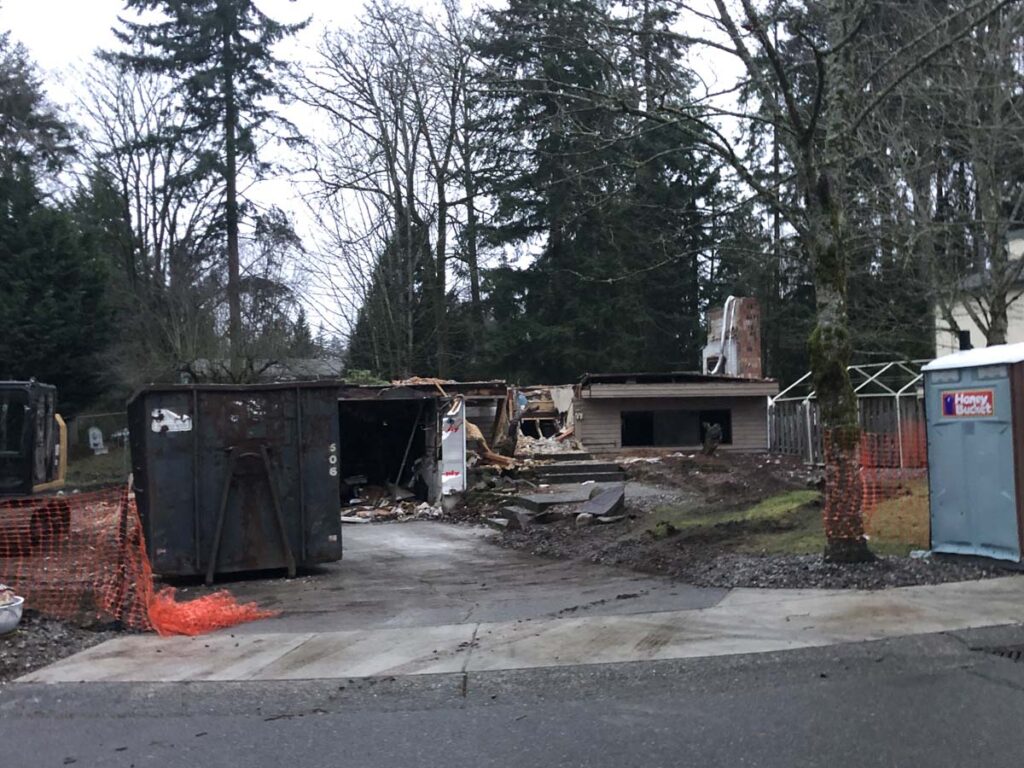
Before starting your house demolition project, the initial planning and assessment phase is critical.
Conducting a Thorough Property Inspection
Begin with a detailed inspection of the property. Identify any hazardous materials, structural issues, and elements that need special handling. This careful inspection makes certain that you address all safety concerns and prepares you for the next steps.
Hiring a Professional Demolition Contractor
Choose a professional contractor like PNW Demolition. Hiring experts guarantees the project is handled safely and efficiently. Professional contractors bring experience, proper equipment, and industry knowledge, which is essential for a smooth demolition process.
Obtaining Necessary Permits and Approvals
Securing the required permits is essential. Check with local authorities to understand the necessary permits and approvals for your demolition project. Proper permits prevent legal issues and meets compliance with local regulations.
Budgeting for the Demolition Project
| Cost Component | Approximate Costs |
| Demolition Method | Mechanical: $4,000 – $15,000 |
| Asbestos Abatement | Variable, based on size and extent |
| Utility Disconnections | Varies by utility type |
| Waste Disposal | Depends on material volume |
Proper budgeting helps you manage costs and avoid unpleasant surprises during the project.
Preparing for Demolition
Before starting a demolition project, you need a detailed plan. Assess the demolition site thoroughly. Look for potential hazards like asbestos, lead paint, or structural weaknesses.
Create a thorough site plan. This should include a layout of the property, showing building structures, utilities, and any salvageable materials.
Disconnect utilities before starting demolition work.
Disconnecting Utilities Checklist:
- Water: Turn off at the main valve and drain pipes.
- Electricity: Shut down at the main switch or panel.
- Gas: Close the main valve and cap pipes.
- Sewer: Disable connections properly.
Items like doors, windows, and appliances can be valuable to others. Consider donating usable materials to local organizations.
Demolition Methods
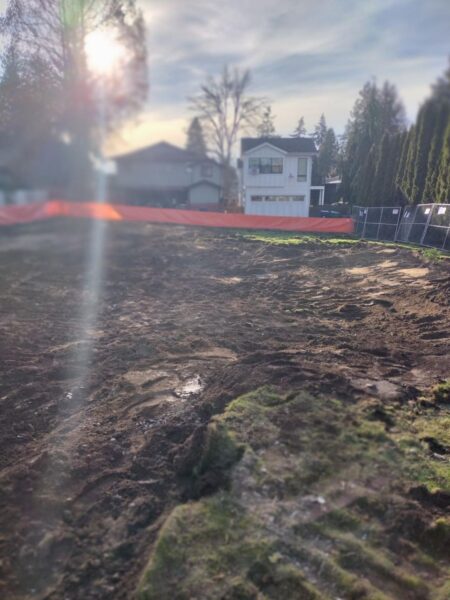
Mechanical Demolition
Mechanical demolition involves the use of heavy machinery like excavators and bulldozers. These machines are effective in quickly tearing down structures. They make short work of large buildings and homes with solid structures.
Advantages:
- Speed: Mechanical demolition is fast and efficient.
- Cost-Effective: Generally cheaper than other methods.
- Safety: Machines handle most of the heavy lifting, reducing manual labor risks.
Considerations:
- Noise and Dust: Causes significant noise and dust.
- Space: Requires ample space for machinery operation.
Deconstruction
Deconstruction is the manual dismantling of the house piece by piece. This method is slower but allows for the careful removal of materials for reuse or recycling.
Benefits of Deconstruction:
- Recycling: A large portion of materials can be reused.
- Reduced Waste: Minimizes the amount of debris sent to landfills.
- Precision: Less risk of damaging materials you want to keep.
Implosion
Implosion uses controlled explosives to bring down a building. This method is suitable for large structures surrounded by limited space.
When Implosion is Appropriate:
- Urban Areas: Effective in dense urban settings where space is at a premium.
- Time-Efficiency: Can take down a building within seconds.
- Safety: Requires expert planning to guarantee safety of surroundings.
Contact us at PNW Demolition today to figure out which method works best for you, with a free quote!
Safety Considerations
Ensuring worker safety should be your top priority. All workers must use personal protective equipment (PPE) such as helmets, gloves, safety glasses, and steel-toed boots.
Public safety measures must also be in place. Carefully secure the demolition site with barriers and warning signs to keep unauthorized individuals out. Communicate with neighbors and the community about the demolition schedule and potential disruptions.
Environmental safety is another critical aspect. Effective dust control and debris management are vital. Use water sprays and protective covers to minimize dust.
Proper disposal of hazardous materials is necessary to avoid legal and environmental issues. Identify and safely remove materials like asbestos, lead paint, or other hazardous substances as per local regulations.
Managing Waste and Recycling
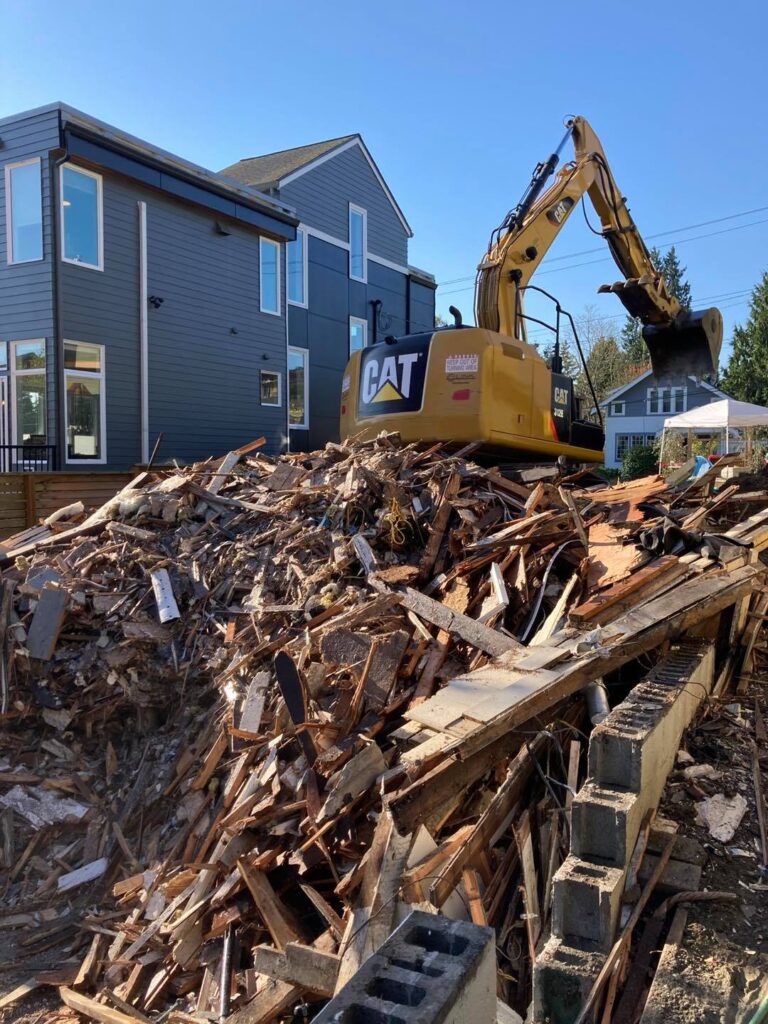
Managing waste and recycling during a house demolition is important. First, create a waste management plan. This helps in sorting and recycling materials like concrete, wood, metal, and others.
Sorting and Recycling Demolition Waste
Before demolition begins, identify materials that can be recycled. Set up different containers or areas for concrete, wood, and metal. Sorting waste at the start saves time and money later.
Concrete can be crushed and reused in new construction projects. Wood can often be repurposed or turned into mulch. Metal is highly recyclable and can be processed to create new products.
| Material | Recycling Method |
| Concrete | Crushed for new projects |
| Wood | Reused or turned into mulch |
| Metal | Processed for new products |
Proper Disposal of Non-Recyclable Waste
Not all materials can be recycled. Make sure of proper disposal of non-recyclable waste like hazardous materials.
Check with local authorities for hazardous waste disposal guidelines to avoid penalties and environmental harm.
Benefits of Recycling in Demolition Projects
Recycling reduces the amount of waste sent to landfills. It also conserves natural resources and can be cost-effective for your project. Partner with PNW Demolition to guarantee guarantee a sustainable and efficient demolition process.
Post-Demolition Steps
Site Cleanup and Grading
Remove all debris from the site. This includes leftover building materials and any hazardous substances. Grading the land means leveling it to avoid any drainage issues later on.
Removing Debris and Leveling the Site
Use heavy machinery or hire experts like PNW Demolition to handle larger pieces safely. Make sure the site is completely cleared before moving forward..
New Construction or Landscaping
After clearing the debris, you can prepare your site further with leveling, providing a good foundation to build on for your future projects
Decide if you will build a new structure or use the space for garden or recreational purposes. Work with your contractor to guarantee your plans meet all safety and zoning regulations.
Tips for a Smooth Demolition Process
Clear communication with your contractor is essential. Discuss your goals, timelines, and any special requirements upfront. Regular check-ins help in addressing questions or changes that arise.
Be sure to regularly monitor the progress. Staying informed about each stage of the demolition keeps you aware of any issues and allows for quick adjustments, ensuring everything stays on track.
Flexibility with timelines is important. Demolition can be unpredictable due to unforeseen issues like hidden structural problems. Be prepared to adjust plans as needed to accommodate these challenges without hindering progress.
Addressing unexpected issues promptly is important. Problems can come up suddenly, such as discovering old wiring or asbestos. Quick decision-making is key to keeping the project moving forward and avoiding costly delays.
Always hire a reputable company like PNW Demolition to guarantee your project meets all safety and legal standards. Demolition experts frequently deal with regulations concerning these things. It’s like going to the grocery store for them.
| Tips for Smooth Demolition | Description |
| Communication | Keep clear and open communication with your contractor. |
| Monitoring | Regularly check the progress to stay updated on the project. |
| Flexibility | Be adaptable with your timelines to handle unexpected situations. |
| Prompt Issue Resolution | Address issues as they arise to avoid delays and complications. |



